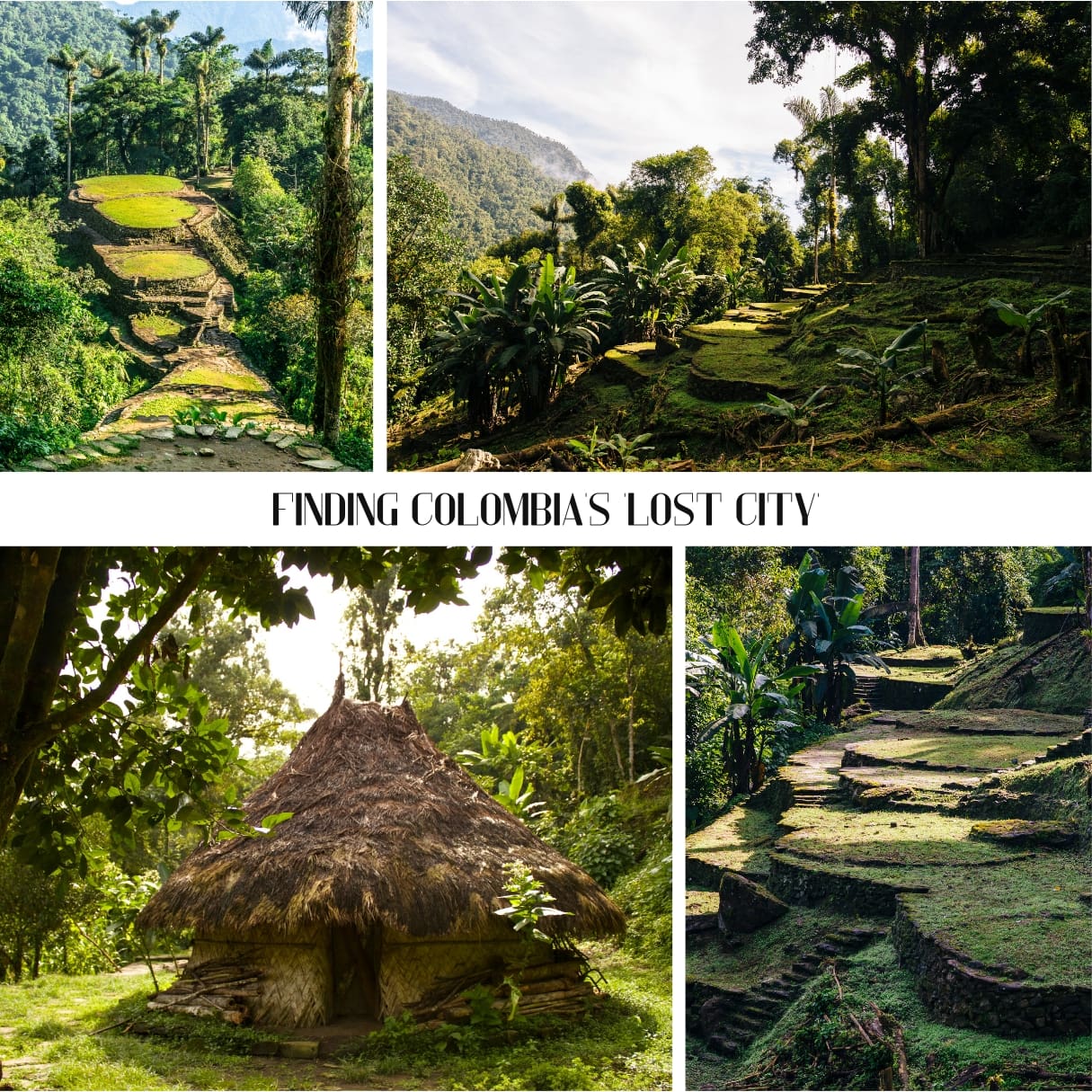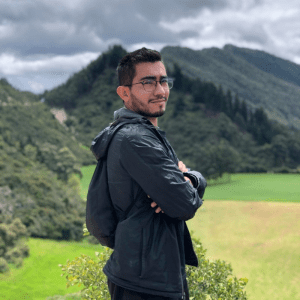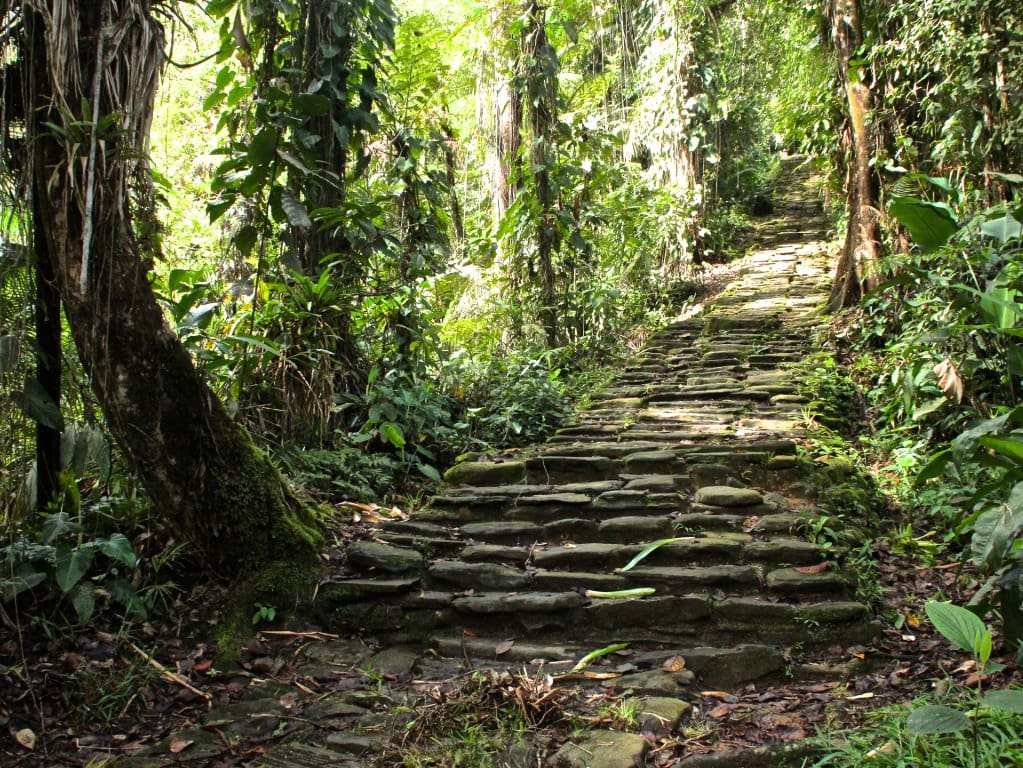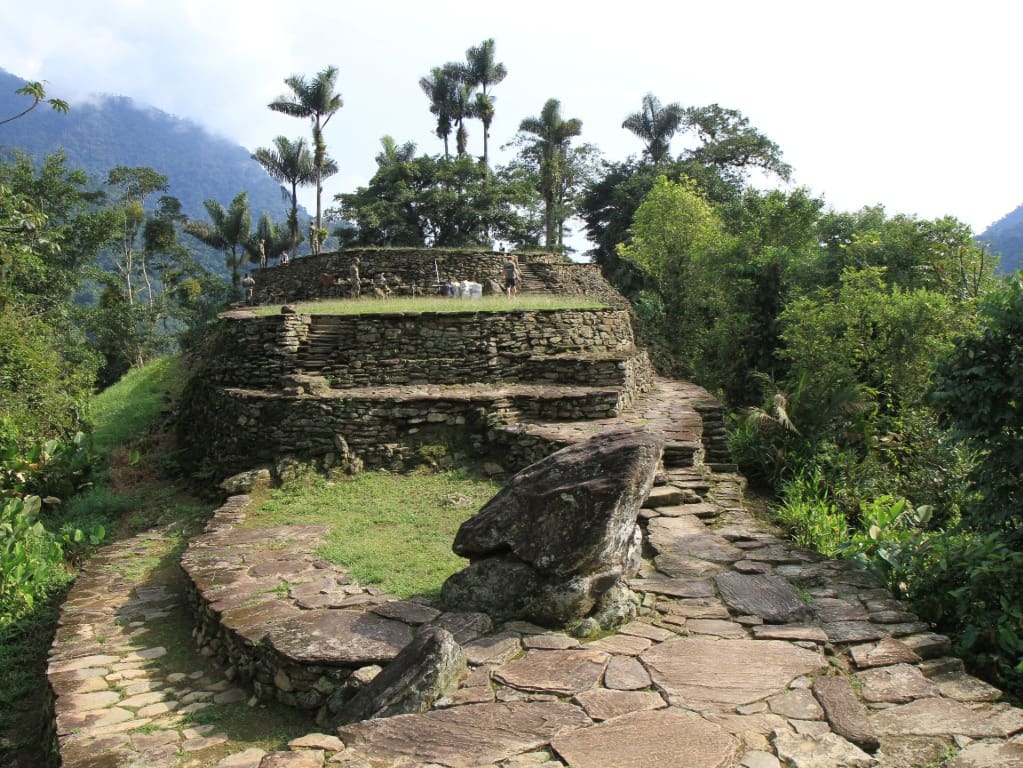
Ciudad Perdida trek is a great option for clients who have already conquered Machu Picchu
BY: IAN STALKER
Colombian tourism officials are inviting energetic sorts to go on a multi-day trek to an archeological site that had already had centuries behind it when much better known Machu Picchu was still a youngster by comparison.
Tourism officials say journeying to interior Colombia’s Ciudad Perdida – which translates as Lost City – is a both a great showcase for both Mother Nature and pre-Hispanic South American civilizations.
“Both [Ciudad Pedida and Machu Picchu] are extraordinary, but each offers a distinct experience,” says María Camila Castellanos, executive director of ProColombia in North America. “The Lost City Trek is set deep in the heart of the Sierra Nevada de Santa Marta, a region recognized by the International Union for Conservation of Nature as one of the most irreplaceable ecosystems on Earth. Ciudad Perdida remains a less-travelled path, offering an immersive jungle trek where hikers connect with nature and Indigenous cultures along the way. Colombia’s incredible diversity means that many travellers feel like they’re visiting six countries in one. The country offers a wide range of archaeological wonders, lush landscapes, and meaningful cultural experiences that are unlike anywhere else in the world.”
Notably, she says the historic site pre-dates Machu Picchu, which is recognized as one of the New Seven Wonders of the World.
“Built around 800 AD, the city was home to the Tayrona civilization, which had advanced engineering and social structures long before the rise of the Inca Empire. Unlike Machu Picchu, which was abandoned and later rediscovered, Ciudad Perdida remained hidden deep in the jungle, untouched by mass tourism. Its remote location and the multi-day trek required to reach it have kept it exclusive, making it a more authentic and rewarding experience for travellers seeking history, nature, and adventure.”
The trek is building a following, with over 59,000 travellers completing the journey between 2022 and 2024.
Christian Ruiz of Bogota-based Awake Travel says the Ciudad Perdida journey is a great trek while also warning that, “it is quite demanding. About 80% of the journey is done on foot, while the remaining 20% is by 4×4 vehicle to reach the starting point of the trail. Hikers walk between 6 to 9 hours per day, crossing hills, rivers, and trails through the foothills of the Sierra Nevada de Santa Marta – the highest coastal mountain range in the world.
While it is not a comfortable trip, he said it is an adventurous and safe one.
“The experience is subject to weather conditions, including rain, long hours of sun, and tropical humidity. Accommodations are simple and rustic, without private bathrooms, air conditioning, fans, or hotel-style mattresses. However, it offers an unparalleled immersion into the landscapes of the Colombian Caribbean, Indigenous villages, and a highly valuable archaeological treasure,” he says. “It is also a great opportunity to meet people from all over the world who share a love for hiking and exploring new places. Interestingly, you will encounter more foreign travellers than Colombian tourists on the trail.”

“Unlike Machu Picchu, the only way to reach Ciudad Perdida is through a 4-to 5-day trek, which naturally limits the number of visitors. This trek takes you deep into the Sierra Nevada de Santa Marta, where you will encounter a rich variety of flora and fauna, breathtaking waterfalls, and rivers. “
–Christian Ruiz of Bogota-based Awake Travel
Ruiz also suggests that Ciudad Perdida is deserving of as much attention as Machu Pichu.
“Unlike Machu Picchu, the only way to reach Ciudad Perdida is through a 4-to 5-day trek, which naturally limits the number of visitors,” he points out. “This trek takes you deep into the Sierra Nevada de Santa Marta, where you will encounter a rich variety of flora and fauna, breathtaking waterfalls, and rivers. Additionally, you can enjoy regional cuisine, share experiences with fellow travellers at campsites, and learn from Indigenous or local guides, who are always accompanied by a cook and an assistant guide to provide valuable insights into this archaeological park. Moreover, Ciudad Perdida is located near other incredible attractions, such as Tayrona National Natural Park and its beaches.”
The Inca Trail and Machu Picchu were developed as tourist sites earlier than Ciudad Perdida and have seen larger and more organized promotion than Ciudad Perdida, explaining why the Colombian site hasn’t received the same attention as its Peruvian counterpart, Ruiz says.
“For a long time, Machu Picchu was practically the top tourist attraction in Peru, while Colombia prioritized promoting Cartagena de Indias as its main travel destination, especially during times of national conflict,” he continues. “With the resolution of conflicts in the region, Ciudad Perdida has become more accessible and is now being actively promoted.”
Ruiz says Ciudad Perdida’s “privileged location” at an altitude of approximately 1,200 metres above sea level makes it a unique adventure that blends history, culture, and nature. The site is still inhabited by Indigenous communities descended from the Tayrona civilization, including the Wiwa, Arhuaco, Kogui, and Kankuamo peoples. Those communities share their spiritual knowledge with visitors and perform traditional rituals. Ciudad Perdida is a living archaeological treasure.
“In fact, the site is closed at certain times of the year for spiritual cleansing ceremonies, as it remains a sacred place for the Indigenous groups who call it home,” he adds.
Tour operators have played a vital role in preserving the Lost City, ensuring it remains a protected treasure while providing a sustainable and authentic experience for every visitor. Companies working closely with Indigenous communities to safeguard the archeological site uphold the region’s rich cultural heritage.
“By embarking on the Lost City trek, travellers contribute to the conservation of this extraordinary destination, helping to protect its history and beauty for generations to come,” Castellanos adds.
Meanwhile, Castellanos says there are many other sites in her homeland which help showcase Colombia’s pre-Columbian heritage.
“Colombia is home to an astonishing number of archeological treasures,” she sates. “The country is filled with sites that showcase the richness of its pre-Columbian civilizations, from intricate tombs to massive stone statues.”
Some of the most notable include:
- San Agustín Archeological Park (in the department of Huila): A UNESCO World Heritage Site, famous for its more than 500 colossal stone statues carved by the ancient inhabitants of the region.
- Cerro Azul in Serranía La Lindosa: also known publicly as the Sistine Chapel of the Ancients, these are rock paintings that were practically hidden for over 12,500 years in Colombia’s Amazon. This is one of the world’s largest prehistoric art collections. Visiting this site is a journey through Indigenous history, where archaeological routes reveal the meaning behind these ancient symbols.
- Tierradentro Archaeological Park (in the department of Cauca): Known for its elaborate underground tombs decorated with intricate paintings and carvings.
- Alto de los Ídolos y Alto de las Piedras (in the department of Huila): Preserved funeral complexes with striking anthropomorphic and zoomorphic sculptures.
- The Gold Museum in Bogotá offers an unparalleled journey into Colombia’s archeological treasures. Home to the world’s largest collection of gold artifacts, it showcases the legendary Muisca Raft — an iconic piece that brings the myth of El Dorado to life. A visit here provides a fascinating glimpse into the rich cultural heritage of Colombia’s Indigenous civilizations, all without venturing far from the city.Facatativá Archeological Park (Bogotá region): Featuring ancient rock paintings that provide insight into the beliefs and traditions of early Colombian societies.
- Calima Darién Archeological Museum (in the department of Valle del Cauca): Showcasing artifacts from the Calima culture, one of Colombia’s earliest civilizations.


“These sites allow travellers to step back in time and explore the incredible ingenuity, mythology, and beauty of Colombia’s Indigenous cultures,” Castellanos adds.
Castellanos also reports growing tourist interest in her homeland.
“Colombia is experiencing an unprecedented tourism boom, and we are thrilled to welcome more international travellers – especially Canadians – than ever before!” she continues. “Our country is flourishing as a global destination, and the numbers speak for themselves: in 2024, we welcomed a record-breaking 6.8 million tourists. Canadian travellers also set new records, with arrivals growing by over 8%, reaching approximately 140,000 visitors.
“Tourism has become not only a key pillar of our economy but also a powerful driver of positive transformation in local communities. For Canadians, Colombia has never been more accessible. With 24 direct flights per week and a travel time of just 5.5 hours, our cities and breathtaking landscapes are closer than ever. Now is the perfect time to experience Colombia. We invite Canadian travellers to embark on a meaningful adventure and discover why the world is falling in love with our country. Come, explore, and let The Country of Beauty surprise you!”

















